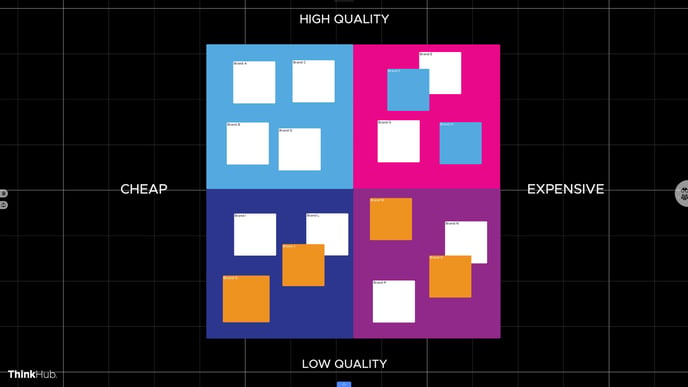A perceptual map is a visual representation that helps marketers grasp the relative positioning of products or brands in the minds of consumers.
A perceptual map plots products and services based on specific attributes or characteristics that matter to consumers. By mapping out this perceptual landscape, marketers gain invaluable insights into where their products stand in comparison to competitors.
Here's how to create your own perceptual map:

- Download the ThinkHub Perceptual Map Template.
- Use the T1V app to send your template to your ThinkHub
-
Select Attributes: Identify the key attributes or factors that influence consumer purchasing decisions in your industry, and update the template accordingly. These could be price, quality, durability, or any other relevant characteristic.
-
Gather Data: Collect data on how consumers perceive different products or brands in relation to the chosen attributes. Surveys, interviews, or existing market research can provide this data.
-
Plot the Map: Place the products or brands on the graph based on their perceived position regarding these attributes.
-
Analyze Results: Examine the map to identify clusters and patterns. Are there products or brands occupying similar positions? Is there a gap in the market that your product could fill?
-
Make Informed Decisions: Armed with insights from your perceptual map, you can tailor your marketing strategies, adjust product positioning, or develop new offerings that better resonate with consumer perceptions.
Perceptual maps serve as invaluable tools for making data-driven marketing decisions, enhancing competitiveness, and meeting consumer expectations effectively.
Ready to try a Perceptual Map? Download the template here.
